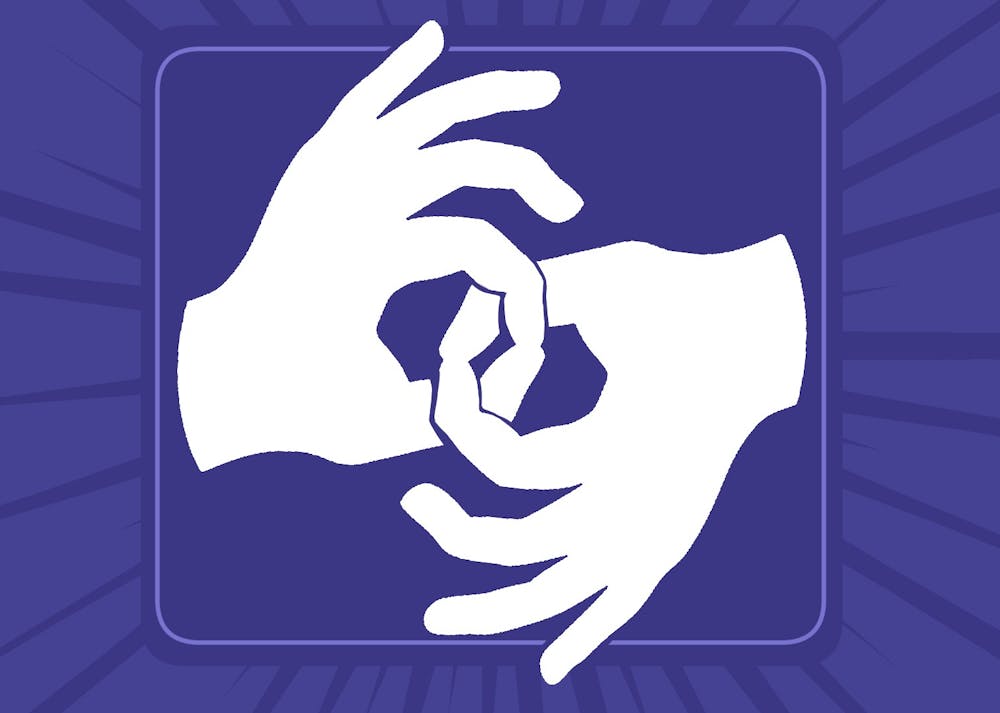A group of ASU students has formed the Accessibility Coalition to represent the disability community at the University.
The new coalition seeks to foster inclusion and build support around disability on campus, said Hannah Grabowski, a gender studies Ph.D. student and member of the coalition.
Lack of trash cans and floor urinals in men's restrooms and wheelchair-accessible elevators are among many of the points of inaccessibility Garrett Tanner, a junior studying marketing, witnesses as someone who uses a wheelchair every day.
According to the Accessibility Coalition's constitution and bylaws, "The accessibility coalition's mission is to combat ableism and stigma as it impacts the overall experience and experiences at ASU."
Although the Coalition is not officially recognized by ASU's Council of Coalitions, the group hopes to ratify its constitution and apply to join the seven other coalitions in the Council some time this semester.
"You got all those seven voices, but there's this eighth, you know, the disability voice," Tanner said. He said the intersectionality of the coalitions could be a powerful tool for all students in the community.
The idea for the Accessibility Coalition came out of the Humanities Lab: Disrupting Dis/Ability during the Fall 2020 semester.
READ MORE: 'Voices of ASU' zine chronicles students' stories of ASU Counseling Services
In the course, students joined "disruptions," or groups that addressed key issues related to disability and inclusion. One group targeted the lack of representation of students with disabilities on campus and formed the Accessibility Coalition afterward.
On Jan. 18, the group hosted an open house to talk through their action steps to become an official coalition and provide a platform for organizations and projects centered around accessibility.
Mapping Access, a group whose members attended the open house in support of the new coalition and also formed out of the Humanities Lab, is a project designed to show accessible paths, bathrooms, entrances, exits, elevators and links to the Americans with Disabilities Act compliance forms on an "accessibility" layer for the ASU Campus Map, according to slides provided to The State Press.
Mapping Access spent a day in November with a group of volunteers looking for accessible paths, bathrooms and elevators on the Tempe campus. Currently, accessible parking lots and more are featured on the map layer.
When the group mapped the Tempe campus to find points of access, David Jaulus, a Ph.D. candidate in justice studies, said his wheelchair's wheels got stuck on the stairs next to a ramp.
Jaulus said the stairs "were not painted in any way to differentiate the stairs from the ramp, and so I nearly fell down a flight of stairs, and would have, had a bunch of people not been there to help me."
Mapping Access aims to draw attention to potential hazards such as unmarked stairs on all ASU campuses. The group plans to hold a mapping event on the West campus in March, according to a member of Mapping Access.
RaNiyah Taylor, a junior with Mapping Access who studies political science and family and human development, said the Accessibility Coalition could be a place for all students to work together to make the campuses a safer and more accessible space.
"When it comes to when you're working on something that's mainly going to benefit people with disabilities, it's important to use groups like the coalition ... so an able-bodied person isn't the only one doing the work and having their point of view put forward," Taylor said.
READ MORE: Opinion: ASU's diversity training needs to be more inclusive of disability language
Eye to Eye at ASU, an organization that pairs up college students and middle schoolers with learning disabilities to promote inclusivity through activities like art projects, also has found a home within the Accessibility Coalition.
Katie Davis, a sophomore studying business data analytics, is a co-leader of Eye to Eye. Although the organization has paused many of its operations due to the pandemic, Davis is enthusiastic about supporting the Coalition.
"With so many resources available, there's not usually a clear communication for how they can be delivered," Davis said. She hopes the Coalition will help streamline the resources at ASU to students who can benefit from them.
Christine Leavitt, a graduate student studying women and gender studies who worked on the Humanities Lab: Disrupting Dis/Ability, said the Accessibility Coalition will also draw attention to inherent ableism on campus and disrupt it.
"The literature on people with disabilities has traditionally been written by able-bodied people, not the people with the disabilities ... so I think it's really, really important to put ableism as one of the big things that needs to be disrupted," Leavitt said.
Reach the reporter at alcamp12@asu.edu and follow @Anna_Lee_Camp on Twitter.
Like The State Press on Facebook and follow @statepress on Twitter.
Continue supporting student journalism and donate to The State Press today.




